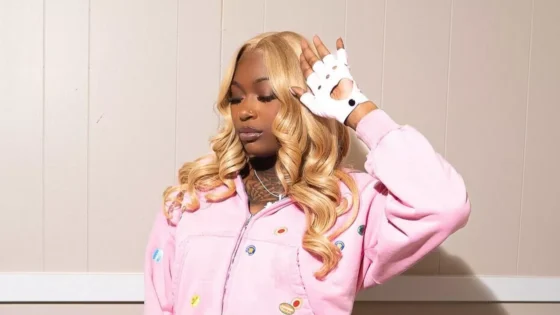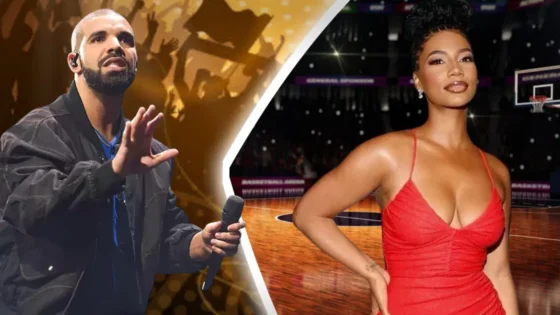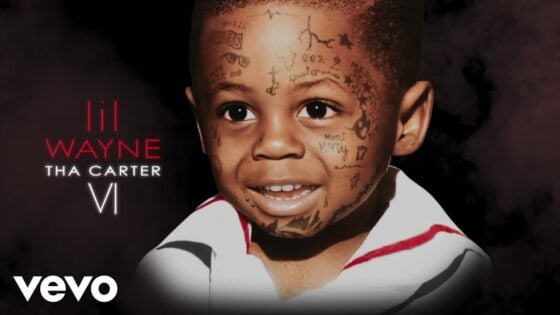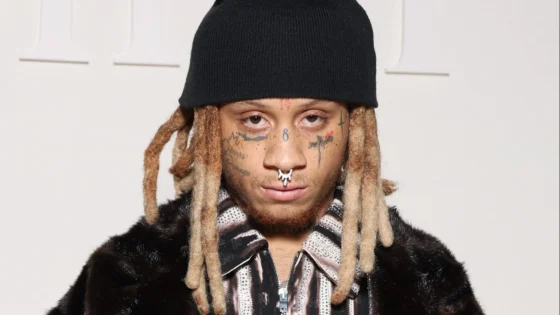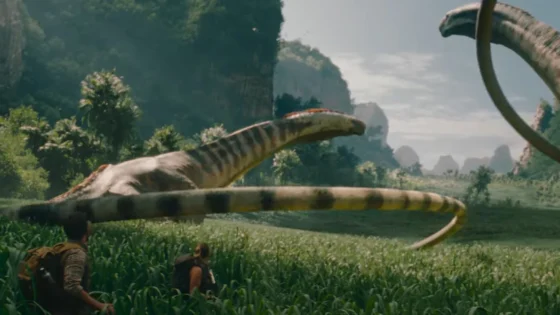TV
The Mandalorian “Chapter One” is an Impressively Lush, Spaghetti Western-inspired Introduction to its World
The Mandalorian Season 1 Episode One Review: “Chapter One”
George Lucas famously took inspiration from Akira Kurosawa’s The Hidden Fortress when first writing his treatment of what was then titled The Star Wars; it’s pretty much why we spend the first twenty minutes of A New Hope with R2-D2 and C3-PO. He also used many of its shot compositions, but ultimately reconstituted the pastiche through a unique, worn science fantasy style into what we collectively recognise as Star Wars: A New Hope. In the ensuing four decades, the Star Wars franchise has looked well beyond Kurosawa for its cinematic language, channeling everything from gangster movies to political thrillers to survival horror to wuxia through its peculiar galactic design.
Now, to the delight of everyone who has ever wanted Star Wars to be a Western since seeing gunslinger Boba Fett, The Mandalorian is here to satisfy under auspices of director Dave Filoni.
That “Chapter One” is a meditative and deliberate character study where nothing extraordinary happens, and yet is still riveting, suggests that The Mandalorian will be a complex and thoughtful offering.
The first episode, titled “Chapter One,” is a tale of two halves, and within those halves are two different Sergio Leone spaghetti westerns. As with that genre, the exposition is minimal; yet, accepting the basic conceit as one does with a Western — in this case, the eponymous Mandalorian (forever the ‘Mando’ with No Name, played by Pedro Pascal) is a gun-toting bounty hunter who goes around chasing renegades — the rest is parsed out. Given the series is so stylistically steeped in that heritage, it is fruitful to analyse The Mandalorian in the context of its spaghetti western influences.
The opening moments find the Mandalorian checking a transponder on some icy planet amidst a sleet storm, then ambling towards some podunk outpost framed by a wide shot, in much the way Stony the gunman did in the beginning of Once Upon A Time In The West. The subsequent scene, in a bar, reflects Once Upon A Time In The West’s saloon confrontation as well — if not for the actual exchanges, then for the chiaroscuro contrast in the set lighting, the cutting to the other patrons’ reaction to accentuate unease, and the close-ups of all involved. Composer Ludwig Göransson even tries for something akin to the famous aching harmonica, but lower-pitched with woodwinds.
Unlike Cheyenne and Harmonica in Leone’s masterpiece, “Chapter One” sees the Mandalorian break the tension by breaking a few heads, as he quickly comes to collect his target fugitive: a blue-gilled alien named Mythrol (Horatio Sanz), who immediately tries to talk his way out of it. This is one of many naturally-lit, seated conversations that frame the episode, with each successively coaxing a little more emotion from the initially silent Mandalorian. It’s a simple but effective technique, providing expositional context for the uninitiated, introducing the other starring actors, and it ultimately suggests a nuanced character beneath that blank helmet.
The affable-yet-blubbering Mythrol’s juxtaposing role in “Chapter One” efficiently emphasises how imposing the bounty hunter is. For example, Mythrol is a terrified wreck as the Mandalorian clinically dispatches a giant, scaly walrus called Ravinak. His nervous yammering in the face of the Mandalorian’s austere silence aboard the starship makes his request to “evacuate a thorax” far more intimidating. And when Mythrol inevitably tries to plan his escape, the Mandalorian appears like a phantom, mercilessly freezing him in carbonite (but not before Mythrol laments that he won’t be seeing his family by “Life Day”…The Star Wars Holiday Remake, coming to Disney+ this December). To his enemies, this Mandalorian is as much of a frigid void as carbonite.
To his employers, however, he is marginally more talkative. Carl Weathers as Greef Carga, a bounty hunter guild-master and form of bail bondsman, along with Werner Herzog (presumably as “Werner Herzog”), have sparse, largely expositional dialogue, but both immediately create an engaging dynamic with the Mandalorian on the strength of their acting. Weathers especially makes the most of deviously trying to pass off Imperial Credits in the aftermath of the defunct Galactic Empire; the mixture of indignation and exasperation when exclaiming, “They still spend!” is perfect. Werner Herzog essentially just has to intone in his distinctive German accent, but clad in black and surrounded by ex-Stormtrooper bodyguards, it’s no wonder that the Mandalorian is unsettled by his new client’s dubious proposition.
However, the fortune he will be paid in Beskar — the metal alloy used in Mandalorian armour that was ostensibly robbed by the Empire from the Mandalorian homeworld — allows him to ignore the obliquely threatening idea that it is “good to restore the natural order of things after a period of such disarray.”
These conversations are interspersed with brief vignettes of the Mandalorian walking about town ignoring roasted and caged Kowakian monkey-lizards, or through dark alleyways and halls, observed by other mute bounty hunters, which serves to distance him from the liveliness of the society. One gets the feeling that he is less troubled in the desolate plains of foreign planets, or in the cold steel of his spaceship.
Leone’s spaghetti westerns were enriched by a masterful, atmospheric craftsmanship that complemented the profoundly beautiful composition of the cinematography; in that vein, “Chapter One” is very much a pensive tonal piece over anything else, happy to leave much to situational subtext while lingering on that inscrutable helmet.
Only once does the episode pierce through the mask to the man behind it, with disorientating flashbacks to the childhood trauma punctuated by the triggering anvil strikes of a newly minted shoulder plate from the Beskar ingot he received as down-payment.
Each interaction — with his victims, his superiors, his equals — makes the Mandalorian slightly more forthcoming, more human, and less robotic, like the droids he so detests. Credit should be given to Pedro Pascal and his doubles’ physical acting. As the Mandalorian’s emotions come increasingly to the fore, Pascal’s physical demeanour and movements become less constricted, and instead grow more loping and loose. Now that his shoulder plate signet is ceremonially fitted onto his ensemble, it will be interesting to see how the rest of this season explores the broken man occupying the armour, and whether it is a protective halo to suppress his nightmares, or a cage for reawakening humanity.
With humanity comes fallibility, and while the second half of “Chapter One” mirrors the beginning of the first — with a transponder held aloft — here The Mandalorian transitions to its second Leone work, A Fistful of Dollars. Almost immediately after he steps onto the planet’s surface, the Mandalorian nearly has his arm ripped off by a bipedal fish-headed monster called a “Blurrg.” He genuinely becomes “The Mando with No Name,” because Clint Eastwood’s “Stranger” in the Dollars Trilogy couldn’t take a punch either, despite being a fantastic gunman. It’s also possibly the first time a feted, cool, masked Star Wars character anticlimactically getting knocked about hasn’t infinitely diminished the allure; rather, it acts as a reminder of the tenuousness of their line of work. It only took thirty-six years, but Star Wars has finally cracked the “Boba Fett Syndrome.”
The Mandalorian is rescued by Nick Nolte’s pig-faced Kuiil, whose facial hair is alike José Calvo’s helpful innkeeper, Silvanito, in A Fistful of Dollars. Kuiil plays a similar role to Silvanito, feeding and resting the Mandalorian, then guiding him to where the bandits are hiding. There is a shot of the two looking down over a ridge to observe the bandits that echoes Eastwood and Calvo watching the massacre of Mexican soldiers.
The closing act of “Chapter One,” as one would expect for a Western, is a shootout (heavily promoted in the previews). Things are complicated, however, by the presence of the unintentionally deadpanning bounty hunter murder-bot, IG-11 (voiced by Taika Waititi), who shoots before he asks questions like whether the Mandalorian is also part of the bounty hunter’s guild. However, the two team up in order to try to kill the bandits and split the reward. In a true sign of growth, the Mandalorian goes from dismissing droid landspeeder taxi drivers at the start of the episode to repeatedly stopping IG-11 from initiating self-destruction. It’s a darkly funny scene, and like most of the episode, is tonally on point amidst gunfire.
In general, the comedic style in “Chapter One” is comparable to the Original Trilogy in its understated and wry sensibility. The comedy is indicative of larger reassuring qualities that the episode possesses: it is atmospherically, thematically, and tonally cogent. This returns us to the discussion at the start of the review, and poses a question: with the variety of genres Star Wars has subsumed, one can reasonably ask, what is Star Wars “supposed” to be? And therefore, does The Mandalorian feel like Star Wars?
Lest this be mistaken for some covert screed about agendas and ruined childhoods, it is an important question, because it is one that Star Wars has been asking itself since at least 1999, when The Phantom Menace first arrived with its diplomatic negotiations and midichlorians. During Dave Filoni’s show-running and development of The Clone Wars and later Rebels, physical and mystical manifestations of The Force were introduced. Rebels even had time-travel! Rogue One had moral turpitude and bleakness.
Relating to comedy, Lawrence Kasdan’s script made The Force Awakens probably the most overtly comical Star Wars film to date. Meanwhile, one of the frequent criticisms levied at the divisive The Last Jedi was that the so-called “gag humour” pushed things too far for Star Wars. So The Mandalorian and “Chapter One” arrives at a crucial, but not unusual moment in helping to set standards for what Star Wars is — or more accurately, illustrating what it could be.
For that reason, having Dave Filoni direct the first episode of this venture into live-action television was a smart decision. Some shot compositions are deceptively beautiful in their clarity, the mark of a masterful animator who appreciates the importance of artistic staging and creating coherent lines of focus. Furthermore, at this point, Filoni may have contributed more hours to Star Wars canon than George Lucas himself. As Lucas’ padawan, he has a firm grasp of navigating the tonal and shifts within the realm of Star Wars, while still having learnt the core tenets of the series directly from the source.
However, he has frankly executed those ideas with more panache than Lucas managed post-1999. At a time when legions of people are imposing upon the franchise some decades-worth of expectations of what they believe a galaxy far far away should be and represent, The Mandalorian is a nexus of both traditional Star Wars adventure and pushing it towards what fans always imagined the imperfect films to be. That “Chapter One” is a meditative and deliberate character study where nothing extraordinary happens, and yet is still riveting, suggests that The Mandalorian will be a complex and thoughtful offering.
That was a lie about nothing extraordinary happening. There is one revelation at the very end that serves as a brilliant hook for the next episode and has ramifications for Star Wars as a whole. Suffice to say, it brings the Mandalorian’s arc in “Chapter One” to a thematically interesting place that is consistent with his burgeoning humanity. The consequences will surely propel the conflicts for the rest of the season, and it’s the sort of momentous event that gives renewed hope the tumultuous times Star Wars finds itself in won’t be the death of its potential inventiveness as a galaxy-wide lens for exploring compelling concepts.
Other Thoughts/Observations:
The Mandalorian and Greef Carga’s conversation references Star Wars: Underworld, the unproduced live-action series George Lucas had proposed and commissioned purportedly fifty scripts for, and the main reason why he made Clone Wars in the first place — to see if Star Wars was viable on a television budget.
Armourer (Emily Swallow) has an interesting Mandalorian costume that mixes a Viking fur cloak and a cross between a Corinthian and Trojan helmet. Also, watching two Mandalorians sit across from each other, barely speaking with neither removing their helmets, is the sort of awkward visual comedy I hope we see more of amongst these reserved bounty hunters.
Kuiil witheringly chastising the Mandalorian that his ancestors rode “Mythosaurs” and he can barely mount a Blurrg was funny.
Similarly, Brian Posehn’s taxi driver showing up in a spluttering, barely functioning landspeeder was a good joke. They also got a wide-shot landspeeder and screen-wipe in! It’s like poetry!
The CGI for the Blurrgs was generally good, but the combination of the bright daylight and their smooth skin texture made the effect much more obvious than others. Still, we’ve come a long way from staccato creatures incongruously inserted into the Original Trilogy. Also, IG-11 looks so photorealistic!
Watch The Mandalorian













